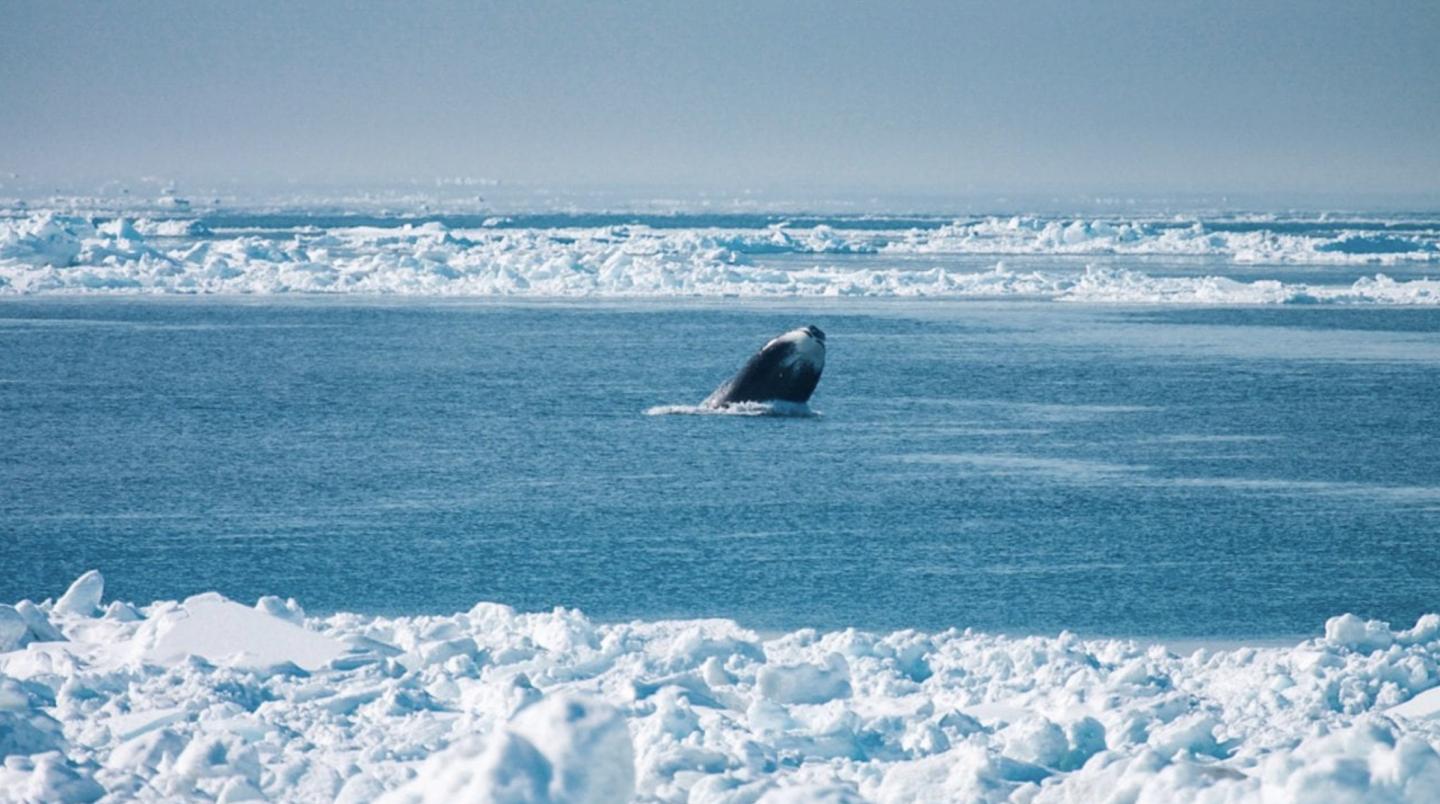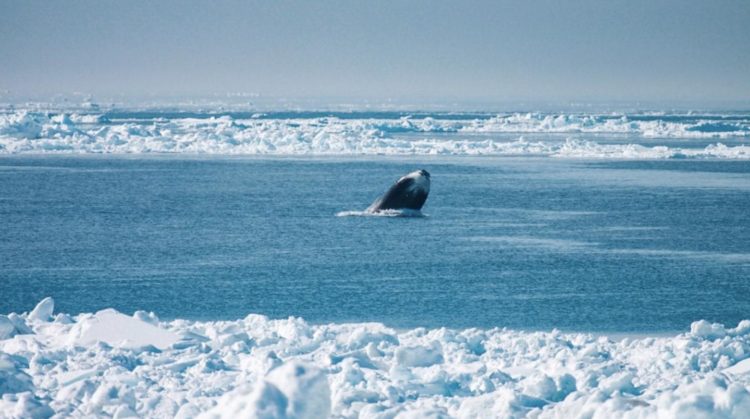
Credit: Photo by Kate Stafford, University of Washington
A study by researchers at Woods Hole Oceanographic Institution (WHOI) shows that the microbial communities inside whales may play an important role in the digestion of one of the ocean’s most abundant carbon-rich lipids, known as a wax ester. Their findings were published Dec. 2 in the Journal of the International Society for Microbial Ecology.
Wax esters are one of the most difficult fats to digest for many animals, including humans. They are especially rich in tiny crustaceans, such as krill and copepods–a favorite prey of filter-feeding bowhead and endangered North Atlantic right whales. Wax esters are also an important lipid in our oceans world-wide, at times storing at least half of the carbon produced by plant-like marine organisms, according to previous studies.
“We found more than 80 percent of the lipids eaten by bowhead whales are wax esters, but less than 30 percent remain in the large intestine,” says WHOI marine scientist Carolyn Miller, lead author of the study. As a result, bowhead whales, among other baleen whale family members, are highly efficient at digesting these lipids. “This is important not only for understanding the cycling of these important lipids in the oceans, but also because whales consume enormous quantities of wax ester-rich prey to support many aspects of their health and reproduction.”
The question is: if wax esters are so difficult to digest for other animals, how can bowhead and other baleen whales are able to digest them so efficiently? Part of the answer could be the millions of tiny microbes, which include bacteria, living in their digestive tract. These microbial communities are commonly referred to as the ‘gut microbiota.’ In humans and other terrestrial animals, gut microbes play important roles in many aspects of health, including digestion, where they often have the ability to break down otherwise indigestible components of the diet.
Miller and her colleagues wanted to study whether or not the bowhead whale’s gut microbes were in fact playing a role in the digestion of the wax esters. To do this, they would first need fresh samples.
But the window to extract samples is a fast-closing one, as decomposition can taint the contents of the gut. “Getting fresh samples from the insides of whales is really rare,” says Miller.
Thanks to the generosity of Alaskan Native whaling captains of the Barrow Whaling Captains Association, who are permitted to take a small number of whales each year for their subsistence, Miller and her colleagues were given an opportunity to extract samples from freshly-harvested bowhead whales. Their combined efforts yielded over one hundred samples from 38 bowhead whales over four years.
In the lab, Miller and her colleagues analyzed these samples from nine locations along the gastrointestinal tract, hoping to detect changes in the microbial communities and lipids throughout the gut of each whale. What they found was a strong connection between the bacterial community and a decrease in the presence of wax esters in the lower part of the small intestine.
“Microorganisms play important roles in the digestive processes of mammals, as well as contributing to immune functioning,” says Amy Apprill, a WHOI microbial ecologist and a coauthor of the study. “This study suggests that the gut bacteria may have a similarly critical role within whales, possibly providing them the assistance they need to break down these fatty prey compounds.”
Miller, Apprill and their colleagues aim to build off of this study’s findings, hoping to determine how much of the digestion is due to the whale itself versus the microbial communities inhabiting its intestines. Ultimately, this may shed light on how these whales and their microbes digest the primary source of energy from their prey to sustain themselves. The results of this research may benefit the Alaskan Native whaling community as well by illuminating how the nutritional resources in the waters off of Point Barrow, Alaska support the local bowhead whales they so rely upon.
“There have been decades of research focused on carbon cycling in the ocean, but how these compounds are being broken down, transformed and utilized to create the substantial biomass of a whale has remained a bit of a black box,” Apprill adds. “This study is providing a unique glimpse into a previously hidden part of the marine food web.”
###
Also collaborating on the paper were Benjamin A. S. Van Mooy, Helen F. Fredricks and Henry C. Holm of Woods Hole Oceanographic Institution, Lara Horstmann from the University of Alaska in Fairbanks, and John C. “Craig” George of the North Slope Borough Department of Wildlife Management in Utqia?vik, Alaska.
The research was funded by Devonshire Foundation (to CAM), Marine Mammal Center, Woods Hole Oceanographic Institution (WHOI; to CAM), WHOI Ocean Life Institute (to AA and CAM), the Dalio Foundation’s Ocean Initiative (now ‘OceanX’) (to AA), and the National Science Foundation (OCE-1756254 and OPP-1543328 to BVM). Samples were collected under Department of Commerce National Oceanic and Atmospheric Administration National Marine Fisheries Service permit numbers 17350-00, 17350-01, and 17350-02 to North Slope Borough Department of Wildlife Management.
The Woods Hole Oceanographic Institution is a private, non-profit organization on Cape Cod, Mass., dedicated to marine research, engineering, and higher education. Established in 1930 on a recommendation from the National Academy of Sciences, its primary mission is to understand the oceans and their interaction with the Earth as a whole, and to communicate a basic understanding of the oceans’ role in the changing global environment. For more information, please visit http://www.
Media Contact
WHOI News Office
[email protected]
508-289-3340





